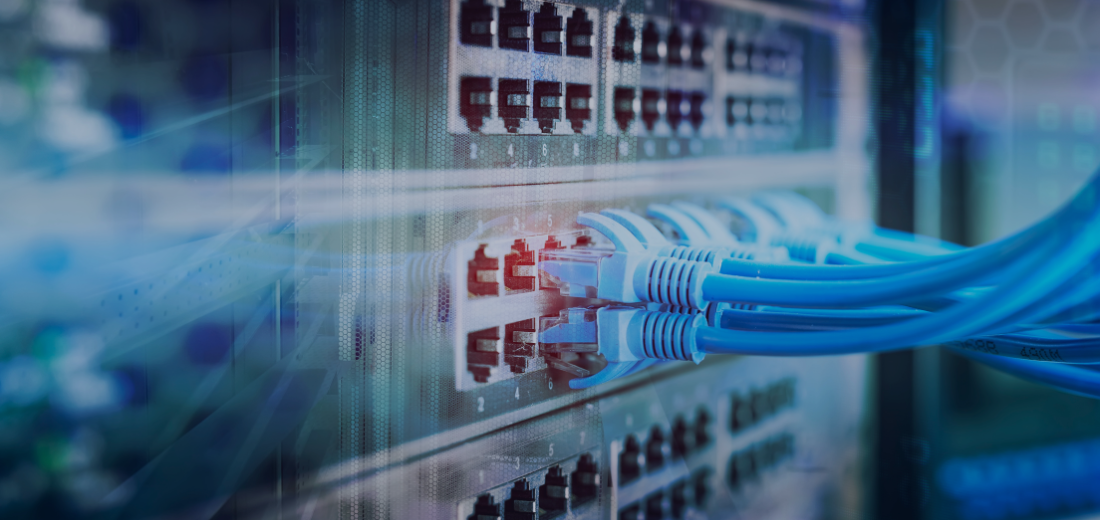Benefits of Upgrading a Facility to Ethernet
Ethernet has been a popular networking protocol for over four decades and is widely used in both local area networks (LANs) and wide area networks (WANs). Ethernet provides a fast and reliable way to transfer data and is the most commonly used protocol for connecting devices in industrial automation and control systems. One of the key benefits of Ethernet integration is the ability to connect multiple devices and systems, allowing for the transfer of data and information between them. This enables the integration of different devices and systems, such as sensors, actuators, and controllers, into a single network, making it easier to monitor, control, and automate processes. Which, ultimately, can improve your productivity and lower the overall cost. However, when integrating devices and systems over Ethernet, it is important to consider the different communication protocols and data formats used by each device. This is because different devices may use different communication protocols and data formats, making it difficult to exchange information between them.
To overcome this challenge, it is best to translate the different communication protocols inside the controller, which acts as a bridge between the different devices and systems and can act as a normalizing point. The controller can translate the data between different protocols and formats, making it possible to exchange information between devices and systems that would otherwise be incompatible. It also provides a centralized location for support and maintenance personnel to see the data and troubleshoot should issues arise.
There are many options for translation devices, but it is recommended to try to utilize in rack communication modules. These modules reduce complexity in many ways, including wiring, “black box” data mapping, panel space and sometimes costs, while maintaining centralized control.
In the perfect plant floor scenario, all your devices and equipment would be aligned on one protocol, but in many instances, due to attempts to leverage the value of various solutions from around the globe, it is difficult to achieve. Nevertheless, the best path is to consider aligning your communication protocols when you look to upgrade or bring new equipment into your facility. Often it is worth the upfront costs to upgrade your equipment at that time to a standard, before you try to integrate it into your network. A clean slate is a better point to start from so the extra cost will have ROI over the life of the systems.
Since Ethernet technology supports high data transfers, (10 mbps to 100 gbps), you can control and collect data in real time, an ideal scenario for manufactures and industrial facilities. Furthermore, the increased bandwidth can generate faster, more efficient data transfers between devices forgoing a quicker response time. Moreover, since bandwidth is high and more data can be transferred, one can integrate a significant number of devices and systems into the automation process. These devices can include Programmable Logic Controllers (PLCs), Distribution Control Systems (DCS), SCADA, IoT devices, wireless systems and more. PLC and DCS are considered advanced control systems. By integrating them into your process via Ethernet, you can expect an increased performance and response in your overall automation process compared to legacy protocols.
Ethernet is a robust and stable network framework that has more possibilities than other networking protocols such as serial communications and fieldbuses. Additionally, Ethernet provides fault tolerance and failover capabilities, which ensures that your network will function even in the event of a network failure.
Lastly, Ethernet is a more commonly accepted universal protocol that is understood by both resources in the OT layer and IT layer alike. There are more people available to design, develop, install, and support an Ethernet system than the sum of people that understand alternate protocols combined. That universal understanding facilitates a common platform for collaboration and eventual IT/OT convergence. That topic is worth a deeper dive in follow on articles but the reality that Ethernet is the bridge between IT and OT cannot be understated.
In summary, while Ethernet can be costly at first glance, the long-term benefits outweigh the initial cost. Ultimately, it will save future headaches, whether it be downtime troubleshooting a communication issue that no one understands, resource flexibility, or when you look to start collecting data and need to easily pass the key tags to those demanding upper level systems.









